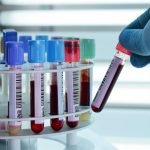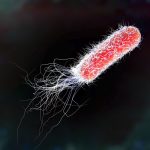Novel Cholesterol Modifiers: Probiotics and Fruit Polyphenols
Vis Medicatrix Naturae
Carrie Decker, ND
As we support our patients’ health holistically, we often find ourselves seeking interventions that not only are naturally derived but which also simultaneously address multiple issues. Antioxidants and botanicals such as curcumin are popular largely because they intersect with a multitude of pathways that contribute to cellular damage and disease. Probiotics are another intervention with great potential, and we continue to learn more about how they can impact not only gut health but also many other biological systems. Polyphenols, consumed at high levels by those who eat a whole-foods diet, continue to generate interest as we learn more about their role as primary mediators of numerous health benefits.1 Interestingly, one of the means by which they appear to affect our health is through their interactions with the microbiome2,3 – once again drawing our attention back to the gut.
Specific probiotic strains are now available that affect cholesterol balance and other parameters related to cardiovascular health. Similarly, there is now ample evidence that polyphenols derived from fruits such as apple, pomegranate, and bergamot orange may be effective interventions for hypercholesterolemia, diabetes, and reducing other aspects of cardiovascular risk.
Probiotics as Lipid-Altering Agents
There are many ways that the intestinal bacteria affect cholesterol metabolism. After cholesterol enters the digestive tract via the diet and biliary secretions, bile acids, synthesized in the liver from cholesterol, break down the cholesterol into micelles, and portions of those micelles are absorbed in the duodenum and proximal jejunum.4,5 Bile acids are reabsorbed or deconjugated, the latter being done primarily by the enzyme, bile salt hydrolase (BSH), which is produced by certain lactobacilli and bifidobacteria in the gut.6-8 Deconjugation causes the bile acids to become hydrophobic, further reducing cholesterol absorption.9 The deconjugated bile acids also become ligands of farnesoid X receptor (FXR),10 which is highly expressed in the liver and the gut and regulates bile acid, cholesterol, and glucose homeostasis.11
Perhaps not surprisingly, BSH-producing probiotics have been shown to lower cholesterol.12 Certain bacteria found in the gut also reduces cholesterol levels in the colon by metabolizing cholesterol to the less absorbable phytosterol, coprostanol,13,14 and by reducing levels of acetate, the short-chain fatty acid that serves as a substrate for hepatic cholesterol synthesis.15
Lactobacillus reuteri NCIMB 30242
Lactobacillus reuteri NCIMB 30242 (LRC™) is one probiotic strain that produces the BSH enzyme at high levels, and thus has been explored as an agent for lipid modification.16 Multiple gold-standard randomized, double-blind, placebo-controlled trials (RDBPCTs) have examined the impact of this probiotic on cholesterol balance, with additional studies also considering its impact on gastrointestinal (GI) health and vitamin D status.
Two studies looked at the impact of LRC™ on cholesterol balance – the first using a yogurt enhanced with this probiotic strain, and the latter using an encapsulated form of the probiotic. Unfortunately, in the first study utilizing the yogurt,16 the colony forming units (CFUs) present in the product had a fairly broad range from the beginning to the end of the study (between 1.9 and 50 billion CFUs per yogurt); this was resolved in the subsequent study17 such that a dosage of the probiotic could be better ascertained. In the yogurt study, hypercholesterolemic adults who were not taking statins or other cholesterol-lowering oral interventions were administered either the probiotic or placebo. In subjects taking the LRC™-containing yogurt twice daily for 6 weeks, significant reductions were observed compared to placebo for various cholesterol fractions: 8.92% for low-density lipoprotein cholesterol (LDL-C); 4.81% for total cholesterol; and 6.01% for non-high-density lipoprotein cholesterol (non-HDL-C).16 Additionally, apolipoprotein B (apoB-100), a predictor of coronary heart disease, was reduced by 0.19 mmol/L.
In the follow-up study – which lasted 9 weeks rather than 6, thus providing more time to properly assess the maximum effect on cholesterol – LRC™ was administered to test subjects at a dosage of 2.0-2.9 billion CFUs (as assessed at endpoint and baseline).17 The population in this RDBPCT included 127 hypercholesterolemic adults on a stable dose of statin medication, but still excluded those on alternate cholesterol-reducing oral interventions. At the study’s endpoint, significant reductions in LDL-C (11.64%), total cholesterol (9.14%), non-HDL-C (11.30%), and apoB-100 (8.41%) were seen in the intervention group compared to placebo.17 Significant reductions in fibrinogen (14.25%) and high-sensitivity C-reactive protein (hs-CRP) (1.05 mg/L) were also noted, indicating that LRC™ may also reduce procoagulation tendencies and inflammation. Increases in plasma deconjugated bile acid levels and decreases in plasma non-cholesterol sterol levels suggested that the effects of this probiotic on cholesterol were at least in part due to altered bile acid metabolism and reduced cholesterol absorption.
In conjunction with the second RDBPCT,17 GI symptoms were surveyed among the 127 subjects via a 93-question self-diagnosis questionnaire for irritable bowel syndrome (IBS).18 Much like any population, GI symptoms of diarrhea, constipation, bloating, and burning were common, and over half the individuals were found to have functional bowel disorders at baseline. After taking LRC™ or placebo twice daily for 9 weeks, those receiving the intervention had significant improvements in their scores related to overall GI health status and diarrhea symptoms compared to placebo. Additionally, a significantly greater percentage of responders was found in the probiotic group.
Finally, a study was conducted to assess the impact of LRC™ on vitamin D levels.19 As an agent that modifies cholesterol absorption and interacts with FXR (which also affects vitamin D biosynthesis),20 investigators were concerned that levels of this fat-soluble vitamin might be adversely affected, potentially increasing cardiovascular disease risk.21 Again, much like the standard population, baseline levels of 25-hydroxyvitamin D (25[OH]D) were found to be borderline in many of the individuals in this study, with a mean of 30 ng/mL and 27.2 ng/mL in the placebo and intervention groups, respectively. Rather than finding a decrease in serum 25(OH)D, an increase of it by 25.5% was observed in the LRC™ group after taking the probiotic for 9 weeks – a significant increase of 22.4% compared to the placebo group.
CV & Metabolic Benefits of Fruit Polyphenols
A quick search of PubMed on the topic of polyphenols will rapidly show that research on this subject has increased nearly 20-fold within the last 20 years. It should not be surprising, as these potent antioxidants – such as flavonoids, isoflavones, tannins, and anthocyanidins, found in fruits, legumes, red wine, tea, coffee, and chocolate – are generally consumed at fairly high levels compared to other, better-known antioxidants.22 For example, we ingest approximately 1 g/d of polyphenols, as compared to 100 mg/d of vitamin C. Apples are a fruit that provides abundant amounts of these polyphenols. Over the years we have all heard the adage, “An apple a day keeps the doctor away”; research now shows this actually may be the case for conditions such as cardiovascular disease, type 2 diabetes, chronic obstructive pulmonary disease, lung cancer, and asthma.23 Pomegranate and bergamot citrus are 2 other fruits that provide a significant amount of polyphenols and are thus a topic of health-related research.
An Apple a Day
Apples contain significant amounts of the flavonoids quercetin and rutin, as well as procyanidins (also known as condensed tannins), each being found at high levels in the skin of the fruit.24-27 The total polyphenol content of an unripe apple is 10-100 times that of a ripe one,28 likely reflecting the important role of polyphenols in protecting the developing fruit from ultraviolet radiation and pathogens.29 Studies show that polyphenol-containing extracts from apples have a high antioxidant potential (with only 0.4% coming from vitamin C),30 which may contribute to some of the health benefits seen with apple consumption. Animal studies have shown several mechanisms by which apple polyphenols (APs) may impact cholesterol balance and body weight, leading to interest in their clinical effects in humans.31-34
AP supplementation has been observed clinically to improve cholesterol balance. In one RDBPCT, healthy male and female subjects with slightly elevated cholesterol levels were given an AP product at a dosage of 300, 600, or 1500 mg/d for a period of 4 weeks.35 It was found that the APs had a dose-dependent effect of reducing total cholesterol, and also significantly decreased LDL-C at the highest dosage. A second RDBPCT looked at the impact of APs on healthy individuals with an elevated body mass index (BMI) of 23 to 30 kg/m2. At a dosage of 600 mg/d for 12 weeks, consumption of APs significantly reduced both total cholesterol and LDL-C compared to baseline, as well as at week 4 compared to placebo.36 Decreases in visceral fat and body weight were also observed in the group receiving APs, compared to baseline and placebo.
Pomegranate
Much like the apple, the pomegranate contains numerous polyphenols, including ellagic acid, ellagitannins, and quercetin.37 And like the apple, the skin of the pomegranate contains the highest level of these polyphenols, and is pressed with the arils in the process of making juice. Punicalagin, an ellagitannin, is responsible for 50% of the antioxidant activity of the juice.38 Numerous studies have shown cardiovascular and metabolic health benefits from pomegranate consumption, including decreases in systolic and diastolic blood pressure;39 total cholesterol, LDL-C, and oxidized LDL-C;40,41 and carotid intima–media thickness (CIMT).42
The effects of a pomegranate extract (PE), standardized to 30% punicalagins, were investigated in a population having numerous cardiovascular disease risk factors – adults who had recently experienced a myocardial infarction. In this RDBPCT, subjects took, in addition to other indicated mediations, either PE (300 mg twice daily) or placebo.43 After 4 weeks, significantly greater improvements in triglycerides, total cholesterol, LDL-C, HDL-C, and non-HDL-C were seen in the group receiving the PE compared to the placebo group. Additionally, significantly greater reductions in oxidized LDL-C, homocysteine, and hs-CRP were observed in the intervention group. In the subset of subjects who also had type 2 diabetes, significant improvements in blood glucose and HbA1c levels were also seen.44
Bergamot Citrus
An additional fruit providing high levels of polyphenols – and one that is worthy of mention in a discussion of cardiovascular and metabolic health – is the bergamot citrus. The peel and juice of bergamot citrus are rich sources of polyphenols, primarily flavonoids, including hesperetin, neoeriocitrin, naringin, and neohesperetin.45-47 Conjugates of compounds found in bergamot citrus have been shown to be structural analogs to statins, with computational models showing they likely act as inhibitors of 3-hydroxy-3-methylglutaryl-CoA (HMG-CoA) reductase.48 Animal models have shown that bergamot polyphenols (BPs) may improve metabolic health via increasing fecal bile acids and steroid excretion, improving insulin resistance, and reducing hepatic steatosis.49-51
Human studies have also shown that supplementation with BPs improves dyslipidemia. When taken daily for 6 months by individuals with moderate hypercholesterolemia, supplementation with 400 mg of bergamot extract, providing 150 mg of BPs, led to significant reductions in total cholesterol and LDL-C (up to 12% and 20%, respectively) and triglycerides (up to 17%), and a significant increase in HDL-C (up to 8%).52 A significant increase in large LDL particles, as well as decreases in small, more atherogenic LDL particles, were also observed. Additionally, CIMT was shown to decrease by up to 25%.
Given that BPs affect cholesterol via HMG-CoA reductase inhibition, one might question whether they may have side-effects similar to statin medications. This has been investigated clinically. In a study of individuals unable to take statins due to their side-effects, treatment with 1500 mg of BPs daily for 30 days led to a 25% reduction in total cholesterol and a 27.6% reduction in LDL-C without the reappearance of any of the side-effects previously experienced.49 Other research has suggested enhanced effects of statins by BPs. A study showed that the combination of 1000 mg of BPs and 10 mg of rosuvastatin had a similar effect on cholesterol as 20 mg of rosuvastatin, establishing a rough equivalency dosage.53
Closing Comments
As a holistic care provider might expect, interventions that improve the health of the gut and the consumption of fruit-derived antioxidants are both effective in improving metabolic health. We find that our knowledge only continues to grow as a preponderance of data backing our use of these naturally-derived interventions is established.
References:
- Rodriguez-Casado A. The Health Potential of Fruits and Vegetables Phytochemicals: Notable Examples. Crit Rev Food Sci Nutr. 2016;56(7):1097-1107.
- Tuohy KM, Conterno L, Gasperotti M, Viola R. Up-regulating the human intestinal microbiome using whole plant foods, polyphenols, and/or fiber. J Agric Food Chem. 2012;60(36):8776-8782.
- Moco S, Martin FP, Rezzi S. Metabolomics view on gut microbiome modulation by polyphenol-rich foods. J Proteome Res. 2012;11(10):4781-4790.
- Woollett LA, Wang Y, Buckley DD, et al. Micellar solubilisation of cholesterol is essential for absorption in humans. Gut. 2006;55(2):197-204.
- Iqbal J, Hussain MM. Intestinal lipid absorption. Am J Physiol Endocrinol Metab. 2009;296(6):E1183-E1194.
- Dong Z, Lee BH. Bile salt hydrolases: Structure and function, substrate preference and inhibitor development. Protein Sci. 2018;27(10):1742-1754.
- Ridlon JM, Kang DJ, Hylemon PB, et al. Bile acids and the gut microbiome. Curr Opin Gastroenterol. 2014;30(3):332-338.
- Gérard P. Metabolism of cholesterol and bile acids by the gut microbiota. Pathogens. 2013;3(1):14-24.
- Bustos AY, Font de Valdez G, Fadda S, Taranto MP. New insights into bacterial bile resistance mechanisms: the role of bile salt hydrolase and its impact on human health. Food Res Int. 2018;112:250-262.
- Matsubara T, Li F, Gonzalez FJ. FXR signaling in the enterohepatic system. Mol Cell Endocrinol. 2013;368(1-2):17-29.
- Ali AH, Carey EJ, Lindor KD. Recent advances in the development of farnesoid X receptor agonists. Ann Transl Med. 2015;3(1):5.
- Jones ML, Tomaro-Duchesneau C, Martoni CJ, Prakash S. Cholesterol lowering with bile salt hydrolase-active probiotic bacteria, mechanism of action, clinical evidence, and future direction for heart health applications. Expert Opin Biol Ther. 2013;13(5):631-642.
- Veiga P, Juste C, Lepercq P, et al. Correlation between faecal microbial community structure and cholesterol-to-coprostanol conversion in the human gut. FEMS Microbiol Lett. 2005;242(1):81-86.
- Lichtenstein AH. Intestinal cholesterol metabolism. Ann Med. 1990;22(1):49-52.
- Cani PD, Bibiloni R, Knauf C, et al. Changes in gut microbiota control metabolic endotoxemia-induced inflammation in high-fat diet-induced obesity and diabetes in mice. Diabetes. 2008;57(6):1470-1481.
- Jones ML, Martoni CJ, Parent M, Prakash S. Cholesterol-lowering efficacy of a microencapsulated bile salt hydrolase-active Lactobacillus reuteri NCIMB 30242 yoghurt formulation in hypercholesterolaemic adults. Br J Nutr. 2012;107(10):1505-1513.
- Jones ML, Martoni CJ, Prakash S. Cholesterol lowering and inhibition of sterol absorption by Lactobacillus reuteri NCIMB 30242: a randomized controlled trial. Eur J Clin Nutr. 2012;66(11):1234-1241.
- Jones ML, Martoni CJ, Ganopolsky JG, et al. Improvement of gastrointestinal health status in subjects consuming Lactobacillus reuteri NCIMB 30242 capsules: a post-hoc analysis of a randomized controlled trial. Expert Opin Biol Ther. 2013;13(12):1643-1651.
- Jones ML, Martoni CJ, Prakash S. Oral supplementation with probiotic L. reuteri NCIMB 30242 increases mean circulating 25-hydroxyvitamin D: a post hoc analysis of a randomized controlled trial. J Clin Endocrinol Metab. 2013;98(7):2944-2951.
- Goldstein JL, Brown MS. Regulation of the mevalonate pathway. Nature. 1990;343(6257):425-430.
- Kilkkinen A, Knekt P, Aro A, et al. Vitamin D status and the risk of cardiovascular disease death. Am J Epidemiol. 2009;170(8):1032-1039.
- Scalbert A, Johnson IT, Saltmarsh M. Polyphenols: antioxidants and beyond. Am J Clin Nutr. 2005;81(1 Suppl):215S-217S.
- Boyer J, Liu RH. Apple phytochemicals and their health benefits. Nutr J. 2004;3:5.
- Hollman PC, Van Trijp JM, Buysman MN, et al. Relative bioavailability of the antioxidant flavonoid quercetin from various foods in man. FEBS Lett. 1997;418(1-2):152-156.
- Hossain MA, Salehuddin SM, Kabir MJ, et al. Sinensetin, rutin, 3′-hydroxy-5, 6, 7, 4′-tetramethoxyflavone and rosmarinic acid contents and antioxidative effect of the skin of apple fruit. Food Chem. 2009;113(1):185-190.
- Foo LY, Lu Y. Isolation and identification of procyanidins in apple pomace. Food Chem. 1999;64(4):511-518.
- Lees GL, Suttill NH, Wall KM, Beveridge TH. Localization of condensed tannins in apple fruit peel, pulp, and seeds. Canadian J Botany. 1995;73(12):1897-1904.
- Yue T, Shao D, Yuan Y, et al. Ultrasound-assisted extraction, HPLC analysis, and antioxidant activity of polyphenols from unripe apple. J Sep Sci. 2012;35(16):2138-2145.
- Picinelli A, Dapena E, Mangas JJ. Polyphenolic pattern in apple tree leaves in relation to scab resistance. A preliminary study. J Ag Food Chem. 1995;43(8):2273-2278.
- Eberhardt MV, Lee CY, Liu RH. Antioxidant activity of fresh apples. Nature. 2000;405(6789):903-904.
- Osada K, Suzuki T, Kawakami Y, et al. Dose-dependent hypocholesterolemic actions of dietary apple polyphenol in rats fed cholesterol. Lipids. 2006;41(2):133-139.
- Lam CK, Zhang Z, Yu H, et al. Apple polyphenols inhibit plasma CETP activity and reduce the ratio of non-HDL to HDL cholesterol. Mol Nutr Food Res. 2008;52(8):950-958.
- Ogino Y, Osada K, Nakamura S, et al. Absorption of dietary cholesterol oxidation products and their downstream metabolic effects are reduced by dietary apple polyphenols. Lipids. 2007;42(2):151-161.
- Osada K, Funayama M, Fuchi S, et al. Effects of dietary procyanidins and tea polyphenols on adipose tissue mass and fatty acid metabolism in rats on a high fat diet. J Oleo Sci. 2006;55(2):79-89.
- Nagasako-Akazome Y, Kanda T, Ikeda M, Shimasaki H. Serum cholesterol-lowering effect of apple polyphenols in healthy subjects. J Oleo Sci. 2005;54(3):143-151.
- Nagasako-Akazome Y, Kanda T, Ohtake Y, et al. Apple polyphenols influence cholesterol metabolism in healthy subjects with relatively high body mass index. J Oleo Sci. 2007;56(8):417-428.
- Seeram NP, Adams LS, Henning SM, et al. In vitro antiproliferative, apoptotic and antioxidant activities of punicalagin, ellagic acid and a total pomegranate tannin extract are enhanced in combination with other polyphenols as found in pomegranate juice. J Nutr Biochem. 2005;16(6):360-367.
- Seeram N, Lee R, Hardy M, Heber D. Rapid large scale purification of ellagitannins from pomegranate husk, a by-product of the commercial juice industry. Sep Purif Tech. 2005;41(1):49-55.
- Sahebkar A, Ferri C, Giorgini P, et al. Effects of pomegranate juice on blood pressure: A systematic review and meta-analysis of randomized controlled trials. Pharmacol Res. 2017;115:149-161.
- Esmaillzadeh A, Tahbaz F, Gaieni I, et al. Concentrated pomegranate juice improves lipid profiles in diabetic patients with hyperlipidemia. J Med Food. 2004;7(3):305-308.
- Aviram M, Rosenblat M, Gaitini D, et al. Pomegranate juice consumption for 3 years by patients with carotid artery stenosis reduces common carotid intima-media thickness, blood pressure and LDL oxidation. Clin Nutr. 200;23(3):423-433.
- Sohrab G, Ebrahimof S, Sotoudeh G, et al. Effects of pomegranate juice consumption on oxidative stress in patients with type 2 diabetes: a single-blind, randomized clinical trial. Int J Food Sci Nutr. 2017;68(2):249-255.
- Goyal R, Nagtilak S, Thawani V, et al. An antioxidative effect of punica granatum (pomegranate) on biochemical parameters in patients with myocardial infarction: a double blind placebo controlled trial. Eur J Boimed Pharm Sci. 2016;3(5):662-667.
- Goyal R, Thawani V, Nagtilak S, et al. Antioxidative effect of punica granatum (pomegranate) on biochemical parameters in patients with diabetes mellitus (type 2) and myocardial infarction: a double blind placebo controlled trial. Int J Adv Res. 2016;4(5):857-864.
- Mandalari G, Bennett RN, Bisignano G, et al. Characterization of flavonoids and pectins from bergamot (Citrus bergamia Risso) peel, a major byproduct of essential oil extraction. J Agric Food Chem. 2006;54(1):197-203.
- Gattuso G, Caristi C, Gargiulli C, et al. Flavonoid glycosides in bergamot juice (Citrus bergamia Risso). J Agric Food Chem. 2006;54(11):3929-3935.
- Di Donna L, De Luca G, Mazzotti F, et al. Statin-like principles of bergamot fruit (Citrus bergamia): isolation of 3-hydroxymethylglutaryl flavonoid glycosides. J Nat Prod. 2009;72(7):1352-1354.
- Leopoldini M, Malaj N, Toscano M, et al. On the inhibitor effects of bergamot juice flavonoids binding to the 3-hydroxy-3-methylglutaryl-CoA reductase (HMGR) enzyme. J Agric Food Chem. 2010;58(19):10768-10773.
- Mollace V, Sacco I, Janda E, et al. Hypolipemic and hypoglycaemic activity of bergamot polyphenols: from animal models to human studies. Fitoterapia. 2011;82(3):309-316.
- Alam MA, Subhan N, Rahman MM, et al. Effect of citrus flavonoids, naringin and naringenin, on metabolic syndrome and their mechanisms of action. Adv Nutr. 2014;5(4):404-417.
- Parafati M, Lascala A, La Russa D, et al. Bergamot polyphenols boost therapeutic effects of the diet on non-alcoholic steatohepatitis (NASH) induced by “junk food”: evidence for anti-inflammatory activity. Nutrients. 2018;10(11). pii: E1604. doi: 10.3390/nu10111604.
- Toth PP, Patti AM, Nikolic D, et al. Bergamot reduces plasma lipids, atherogenic small dense LDL, and subclinical atherosclerosis in subjects with moderate hypercholesterolemia: a 6 months prospective study. Front Pharmacol. 2016;6:299.
- Gliozzi M, Walker R, Muscoli S, et al. Bergamot polyphenolic fraction enhances rosuvastatin-induced effect on LDL-cholesterol, LOX-1 expression and protein kinase B phosphorylation in patients with hyperlipidemia. Int J Cardiol. 2013;170(2):140-145.
 Carrie Decker, ND, graduated with honors from the National College of Natural Medicine (now the National University of Natural Medicine) in Portland, OR. Prior to becoming a naturopathic physician, Dr Decker was an engineer and obtained graduate degrees in biomedical and mechanical engineering from the University of Wisconsin-Madison and University of Illinois at Urbana-Champaign, respectively. She continues to enjoy academic research and writing and uses these skills to support integrative medicine education as a writer and contributor to various resources. Dr Decker supports Allergy Research Group as a member of their education and product development team.
Carrie Decker, ND, graduated with honors from the National College of Natural Medicine (now the National University of Natural Medicine) in Portland, OR. Prior to becoming a naturopathic physician, Dr Decker was an engineer and obtained graduate degrees in biomedical and mechanical engineering from the University of Wisconsin-Madison and University of Illinois at Urbana-Champaign, respectively. She continues to enjoy academic research and writing and uses these skills to support integrative medicine education as a writer and contributor to various resources. Dr Decker supports Allergy Research Group as a member of their education and product development team.










